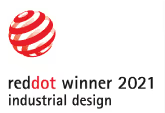By Sean Steigerwald | 5 Minute Read

In June of 2017, Marc Levitz released an incredibly insightful interview where he sat down with two Hot Wheels design legends, Jun Imai and Ryu Asada. These two are responsible for the whole Hot Wheels die-cast team and take us through the process of ideating, designing, and manufacturing Hot Wheels, start to finish. We're big fans of both the Hot Wheels team and their products. Isn't everyone?
Jun Imai wanted to be an automotive designer since he was a kid, which is not surprising to any of us at Trig. If we're all being honest, everyone at Trig knew they wanted to do something creative from the beginning too, and we didn’t waste any time being super nerdy about it. Similarly to Imai and a lot of creatives, Ryu Asada also knew he wanted to build a career in design but his paused his passion temporarily to try and pursue a more stereotypically lucrative career: physics.
(Eventually passion has a way of catching up to you and putting you back on the path anyway.)

Timeless personality of toy cars
Much like our engineers and designers here, their work still starts off with a sketch. Much Imai and Asada's processes are still done by hand. We find it interesting that each car design starts off with the team internally creating a brand that drives that individual car’s looks, and how it fits in with the rest of the Hot Wheels ecosystem. They all have their own personalities, but the team makes sure that it still lives together as a family, expanding and strengthening the Hot Wheels brand as oppose to diluting it in some way. 9-10 months per each new vehicle with lots of different hands touching the product, but a solid process allows them to be super efficient.
It's extraordinary how they’ve grown the brand from just “kids toys” to designing cars that are also meant for adult collectors. Hot Wheels is a great example of how a brand, timeless in personality, continues to grow up with their consumers and visually evolve.
The creative team’s ability to flex their skills to fit the needs of the products being driven by passion is really cool. They don’t hire people based on skill, but on passion because to them, passion will inform and drive the skills, as people set off to realize their designs.
“Every year we do about 1,200 to 1,400 different vehicle releases, and in terms of design, there are about 150 to 200 brand new cars every year. Each one takes about 9 to 10 months to complete. Our designers have several cars going at the same time obviously, whether it’s on the graphics team where they may be designing 10, 20, 30, 40 different graphics at once, or the vehicle designers who may be working on five to six at a time.” My only reaction to that... wow!
How is this for a workplace bonus: They have tracks set up everywhere so the team can play with designs they’re working on. Serious play with serious work. Everyone needs to do more of this.
“We might see our product come in as a finished sample, “in package,” and for us, it’s like a trophy! It’s finally done, it’s ready to go to the stores.” Imai has been quoted as saying in an interview with Petrolicious. Sounds like every designer’s ultimate dream.
Maintaining the proportions of cars that they shrink down to make sure cars still look right at a small scale is a constraint that requires a really keen creative eye. Fudging real proportions in order to make something look more authentic somehow is a funny but necessary thing to maintain the visual brand language or “aura” of a car. This practice really captures the grey areas of good design execution.

Sometimes the Hot Wheels team gets to collaborate with car designers that resonate with them on a personal level, working on their passion and having it affect the bottom line. Actually having original car designers come in and work with them is so unbelievably cool.
Reading up on the Hot Wheels design process is verification that creativity stems from being able to be inspired by anything and everything. Being able to visualize how one cool thing from a different area of creation could be incorporated into a completely different one (in this case, little cars) is key to taking a team's design thinking to new heights of ingenuity.


